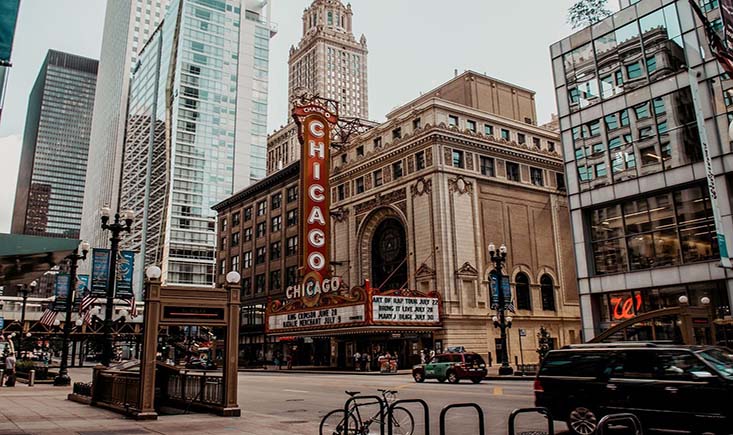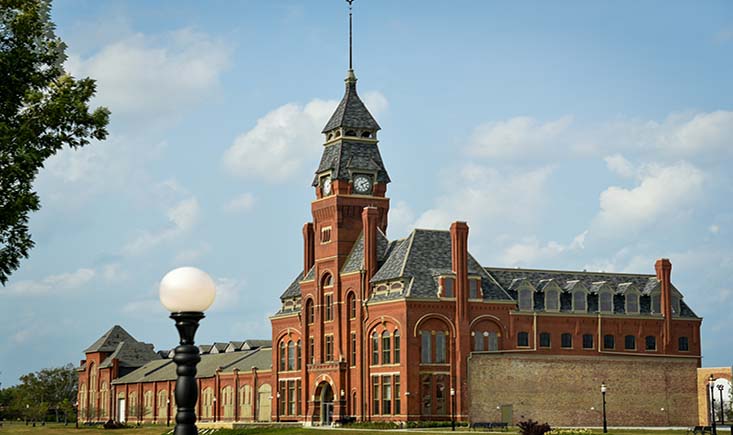
Exploring Chicago’s Rich History: A Journey Through Architecture and Cultural Legacies
Destinations . Sustainable TravelChicago, often referred to as the “Windy City,” is a treasure trove of historical and cultural landmarks. My recent trip to this bustling metropolis allowed me to delve deep into its rich history, uncovering both well-known sites and hidden gems. I will recount my experiences at three destinations I personally explored and recommend four other historical and cultural landmarks that should be on every traveler’s itinerary.
1. The Art Institute of Chicago:

- Location: 111 South Michigan Avenue, Chicago, Illinois
- Highlights: The Art Institute of Chicago, one of the oldest and largest art museums in the U.S., boasts a vast collection that spans centuries and continents. Notable works include Grant Wood’s iconic “American Gothic” and Marc Chagall’s breathtaking “America Windows.” The museum also houses an impressive armor and medieval weapons collection.
- My Experience: My visit to the Art Institute was a feast for the senses. The sheer diversity and quality of the artworks left me in awe. I highly recommend taking a guided tour to gain a deeper understanding of the art’s historical and cultural significance.
This world-renowned museum is a veritable treasure trove of art from around the globe. The sheer diversity and quality of its collections left me in awe. The museum’s halls are graced with iconic works like Grant Wood’s “American Gothic” and Vincent van Gogh’s “The Bedroom.” The Thorne Miniature Rooms, showcasing intricate miniature interiors from different time periods, were particularly captivating. The museum’s commitment to accessibility and education was evident through informative exhibits and interactive displays. The stunning architecture of the museum, including the grand staircase and the serene South Garden, added to the overall experience. The Art Institute of Chicago is undeniably a cultural gem that appeals to art enthusiasts and novices alike.
2. Frank Lloyd Wright’s Robie House:
- Location: 5757 South Woodlawn Avenue, Chicago, Illinois
- Highlights: Designed by the legendary architect Frank Lloyd Wright, the Robie House is a masterpiece of modern architecture. It’s considered a pivotal structure in the history of American architecture. Guided tours provide invaluable insights into Wright’s innovative design principles.
- My Experience: Visiting the Robie House was like stepping into a time machine. Wright’s ingenious use of space and light was nothing short of visionary. The guided tour illuminated the architect’s groundbreaking ideas.
Visiting this architectural masterpiece felt like stepping into a living piece of history. Frank Lloyd Wright’s innovative design and meticulous attention to detail were on full display. The Robie House’s horizontal lines, open spaces, and use of natural materials were groundbreaking for its time and continue to inspire today. The guided tour provided invaluable insights into Wright’s vision and the meticulous restoration efforts that have preserved this architectural gem. The house’s location in the Hyde Park neighborhood allowed me to appreciate the seamless integration of architecture with the surrounding landscape. It’s a must-visit for anyone with an interest in architectural history and design.
3. Chicago Cultural Center:
- Location: 78 East Washington Street, Chicago, Illinois
- Highlights: Housed within a magnificent Beaux-Arts building, the Chicago Cultural Center dazzles visitors with the world’s largest Tiffany stained-glass dome. The center hosts free art exhibitions, concerts, and cultural events year-round.
- My Experience: The Chicago Cultural Center is a hidden gem, offering a splendid blend of art and architecture. The Tiffany dome alone is worth the visit, and the cultural programs add depth to the experience. Don’t miss the chance to catch a live performance or art exhibition.
This cultural hub stands as a testament to Chicago’s unwavering commitment to the arts. The grandeur of the building’s architecture, complete with its stunning Tiffany glass dome, was a sight to behold. Inside, I had the opportunity to explore ever-changing art exhibitions and cultural events that showcased the city’s creative spirit. The center’s dedication to offering free public programming was commendable, making it an accessible and inclusive space for all. The Preston Bradley Hall, with its awe-inspiring dome, served as a particularly memorable space for reflection and appreciation. The Chicago Cultural Center plays a vital role as a vibrant hub for both residents and visitors, providing a platform for artistic expression and cultural exchange.
My journey through these cultural landmarks in Chicago was an enriching and enlightening experience. Each site offered a unique perspective on the city’s rich artistic and architectural heritage. Whether you’re an art aficionado, an architecture enthusiast, or simply curious about Chicago’s cultural offerings, these destinations provide a captivating glimpse into the city’s vibrant cultural tapestry.
4. Chicago History Museum:
- Location: 1601 North Clark Street, Chicago, Illinois
- Highlights: The Chicago History Museum provides an immersive journey through the city’s past. Exhibitions cover a wide range of topics, including the Great Chicago Fire and the city’s role in the Civil Rights Movement.
- Recommendation: History enthusiasts will revel in the extensive collection and well-crafted exhibits. The museum offers profound insights into Chicago’s evolution over time.
The Chicago History Museum, situated in Lincoln Park, is a treasure trove of the city’s rich history and heritage. Established in 1856, it ranks among the city’s oldest and most esteemed cultural institutions. With a vast collection spanning centuries, the museum houses an eclectic assortment of artifacts, documents, and exhibitions. Visitors can embark on a journey through Chicago’s evolution, from its early days as a trading post to its transformation into a global metropolis. Notable highlights include the original “L” car, the exhibit dedicated to the Chicago Fire, and the captivating display of Chicago-style jazz and blues memorabilia. The museum provides a comprehensive glimpse into the city’s past, making it a must-visit for history aficionados and anyone seeking to gain deeper insights into Chicago’s historical tapestry.
5. Pullman National Monument:

- Location: 11141 South Cottage Grove Avenue, Chicago, Illinois
- Highlights: The Pullman National Monument is a historic district that once served as a company town for the Pullman Palace Car Company. It played a significant role in labor and civil rights movements. Visitors can explore the well-preserved district and its history.
- Recommendation: This lesser-known site provides a unique glimpse into industrial history and social activism. The visitor center features informative exhibits that shed light on the past.
Nestled on Chicago’s South Side, the Pullman National Monument commemorates both industrial history and the labor movement in the United States. It preserves the meticulously restored Pullman company town, constructed in the late 19th century as a model community for employees of the Pullman Palace Car Company. Visitors have the opportunity to explore the beautifully preserved Pullman District, which encompasses iconic landmarks such as the Pullman Factory and the Hotel Florence. The Visitor Center serves as an informative gateway to the history of labor and the profound impact of the Pullman Strike of 1894. The monument’s dedication to safeguarding this pivotal chapter in American history offers a compelling and educational experience.
6. DuSable Museum of African American History:
- Location: 740 East 56th Place, Chicago, Illinois
- Highlights: Dedicated to preserving and celebrating African American history and culture, the DuSable Museum features a remarkable collection of art, artifacts, and documents. It includes the personal papers of Dr. Martin Luther King Jr.
- Recommendation: This museum is an essential resource for understanding African American contributions to American history. The thought-provoking exhibitions offer enlightening perspectives.
Located in Chicago’s Hyde Park neighborhood, the DuSable Museum holds the distinction of being the oldest independent African American history museum in the United States. Its primary mission is to celebrate and illuminate the achievements, culture, and contributions of African Americans throughout history. The museum boasts an extensive collection that encompasses art, artifacts, and exhibits spanning from the African diaspora to contemporary times. Visitors have the opportunity to delve into the legacies of African American leaders, artists, and innovators who have indelibly shaped American history. The DuSable Museum stands as a cultural jewel, delivering an enriching and thought-provoking experience while fostering dialogue and understanding.
7. Hull-House Museum:
- Location: 800 South Halsted Street, Chicago, Illinois
- Highlights: Housed in the former settlement house founded by social reformer Jane Addams, the Hull-House Museum tells the story of social reform and immigrant life in early 20th-century Chicago. Visitors can explore historic rooms and engaging exhibits.
- Recommendation: This museum offers a unique perspective on social reform and the immigrant experience in Chicago. Guided tours provide valuable insights into Jane Addams’ pioneering work.
Part of the University of Illinois at Chicago, the Hull-House Museum is situated within the historic Hull-House settlement, founded by Jane Addams and Ellen Gates Starr in 1889. This site played a pivotal role in the Progressive Era, advocating for social reform, women’s rights, and support for immigrants. The museum offers a window into the progressive movement of the late 19th and early 20th centuries through interactive exhibits and guided tours of the historic Hull-House building. Visitors can explore the enduring impact of Hull-House on issues such as child labor, public health, and social justice. It stands as a place of historical significance, shedding light on the progressive ideals that continue to shape contemporary society.
These four cultural sites in Chicago collectively offer a diverse and immersive understanding of the city’s history, labor movements, African American heritage, and social reform endeavors. Each destination provides unique insights into Chicago’s cultural tapestry and historical evolution, rendering them invaluable educational and enlightening experiences for visitors from all walks of life.
Chicago’s historical and cultural richness is a testament to its vibrant past. From world-class art museums to architectural marvels and thought-provoking historical sites, the city offers a diverse array of opportunities to explore its heritage. My journey through these landmarks left me with a profound appreciation for Chicago’s history and its enduring influence on American culture. I encourage fellow travelers to embark on their own explorations of this remarkable city’s historical and cultural treasures.
You may also like
Recent Posts
- Antiquing Through Time in Dundee: A Wanderer’s Chronicle
- Seaside Delights: Discovering Dundee’s Finest Seafood Restaurants
- A Taste of True Scotland: Discovering Authentic Flavors in Dundee
- Hiking and Nature: The Best Outdoor Activities in Dundee
- A Museum Trail Through Dundee: From V&A to The McManus

Leave a Reply